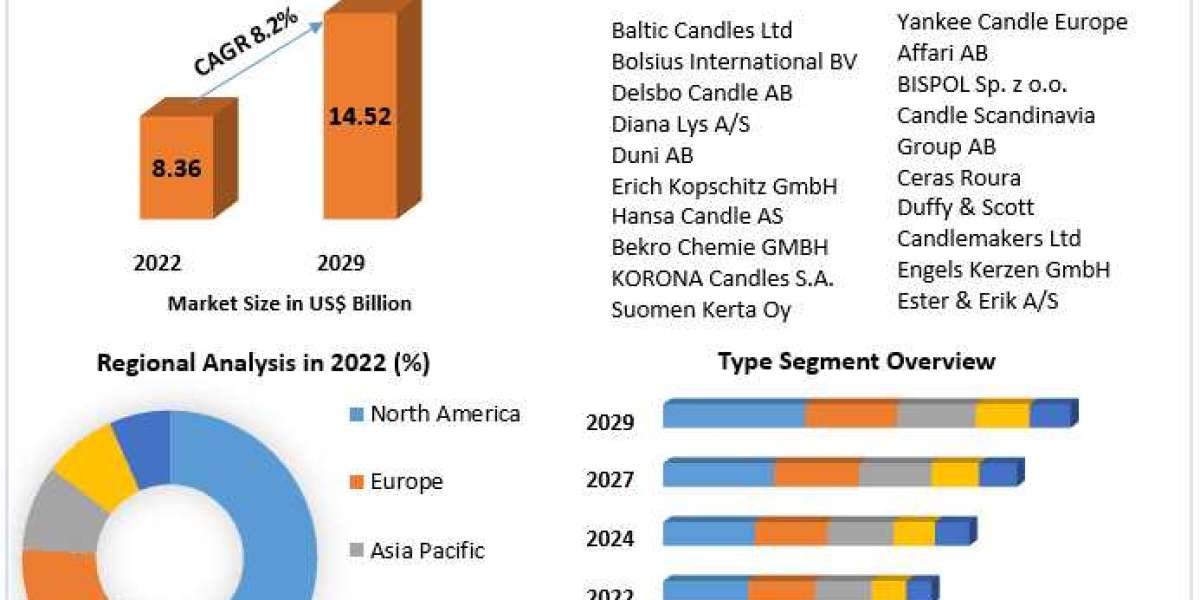AliExpress is a global B2C online marketplace owned by the Alibaba Group. It has become the largest online shopping platform for Chinese manufacturers and exporters to sell directly to international consumers. Some key factors that have contributed to AliExpress's success are its huge catalog of affordable products, seamless shopping experience across desktop and mobile, and ability to reach a global customer base.
In this article, we will do a quick analysis of the major technical and business considerations for developing an e-commerce application similar to AliExpress. We will cover topics like understanding consumer behavior, developing the backend infrastructure, designing UI/UX, setting up product listings and catalogs, integrating payments and order fulfillment, marketing strategies, customer support, global expansion, security and more.
The goal is to understand the holistic requirements rather than focusing on any one aspect. By the end, readers should have a good idea of how to architect and launch their own global cross-border shopping platform. Let's get started!
Understanding Consumer Behavior
One of the first steps in developing an AliExpress-like app is to analyze consumer behaviors and shopping preferences on similar marketplaces. Some key observations about AliExpress shoppers include:
They are primarily interested in affordable products like electronics gadgets, fashion accessories, home decor etc. This means the catalog needs a wide selection of low-priced goods.
Ease of browsing through huge catalogs and seamless navigation on both desktop and mobile is critical to the shopping experience.
Simplistic yet informative product pages that showcase high resolution images, detailed specifications and customer reviews are important.
Global consumers prefer quick delivery timelines and inexpensive/free international shipping options for small orders.
Simple checkout processes and widespread payment methods give shoppers flexibility and confidence during purchase.
Browsing personalized recommendations based on past purchases and interests helps discover new products.
The app design and features must align closely with these behaviors to provide a frictionless shopping experience for users. Optimizing for discoverability, speed and convenience will be key to success.
Developing the Backend Infrastructure
Before starting to build any consumer-facing features, it is important to design the backend infrastructure to support the scale, reliability and performance needed for a global marketplace. Some major technical requirements include:
Product Database: A NoSQL database like MongoDB works well to store flexible product schemas with attributes like images, variants, pricing etc. It needs to support high read-write volumes.
User Accounts: A user account service to store customer profiles, orders, address books, payment details etc. with profile security and privacy.
Search Service: Full-text search integrated with relevance ranking for quick yet pertinent product discovery.
Payment Gateway: Integration with major online and mobile wallets worldwide for seamlessCheckout. Needs to support global currencies, localized pricing and fraud protection.
Inventory Order Management: Real-time updates to product stocks, order fulfillment workflows with merchants, tracking order statuses.
API Framework: RESTful APIs for frontend-backend communication, third party integrations like shippers, analytics etc.
Server Architecture: Microservices based architecture on containers with load balancing, auto-scaling and high availability across regions.
The backend infrastructure forms the fundamental building blocks on which robust global marketplace experiences are delivered at scale. Getting these right first is important before front-end development. Checkout: https://zipprr.com/aliexpress-clone/
Designing the User Interface and Experience
With the foundational tech pieces in place, the next step is to design elegant yet highly functional UI and UX. Some key elements that would define the AliExpress-like shopping experience are:
Homepage: A visually appealing homepage that promotes featured deals and new arrivals while allowing quick access to top categories, search and account details.
Category Pages: Taxonomically organized catalog browsing across top level categories right down to sub-categories. Infinite scrolling for seamless exploration.
Product Pages: Hero imagery with snapshots, prices, ratings. Easy purchasing via cart, wishlists or direct buying options.
Search: Predictive search assisting discovery. Refinement filters for navigating results by price, brand, ratings etc.
Cart Checkout: Simple cart management. Express or multi-step checkout with saved payment methods and addresses. Order confirmation email.
User Profiles: Detailed profile page to track orders, updated addresses, payment methods, ratings and reviews. Messaging support.
Responsive Design: Buttery smooth experience across desktop, mobile and tablets prioritizing discoverability and purchase conversions on all form factors.
Personalization: Feed featuring recent views and relevant new arrivals. Ability to follow favorite stores/products and receive notifications.
Getting both the visuals and interactions optimized for an intuitive journey throughout will be key to elevated usability, engagement and purchase rates.
Product Listings and Catalogs
To seed the catalog with an initial set of attractively presented product offerings, the app needs to integrate tools for merchants and manufacturers to easily onboard their inventories. Some considerations are:
Allow adding individual SKUs or bulk uploading updated product feeds from their systems.
Product schemas to capture all necessary information like title, description, multiple high resolution images, variations, pricing etc.
Guidelines on ideal image sizes, formatting specs, recommended fields to optimize product pages.
Dashboard for merchants to manage, edit and analyze performance of their listings.
Automated or manual approval workflows before newly added listings become searchable/shoppable.
Support for third party integrations like Shopify for one-click listings sync.
Tools for merchandising - grouping related subcategories, tagging with relevant attributes.
Onboarding options need to reduce friction for suppliers while still maintaining high product data quality for an enhanced shopping experience across the marketplace.
Payments and Order Fulfillment
Integrating flexible yet secure payment options together with streamlined order management is vital for conversion:
Support major local and international online/card payments as well as digital wallet options like PayPal.
Allow merchants to configure tracking links to integrate with their existing logistics systems.
Default fulfillment method could be drop-shipping from supplier inventory to customer address.
Manual order processing workflows for exception cases like pre-orders, customized products etc.
Real-time Order status tracking - payment received, shipped, delivered with email/app notifications.
Multi-channel orders sync to sales reports and inventory updates for the merchants.
Support for consolidated shipments, combined shipping, international returns to reduce costs.
Prioritizing seamless checkout experiences while giving visibility and control to both customers and merchants over order details will ensure high satisfaction levels.
Marketing and User Acquisition
To achieve the scale needed to thrive as a global marketplace, leveraging both organic and paid marketing strategies is key:
SEO optimization of catalog and product pages for relevant keywords.
On-app browser push notifications for re-engagement like new deals, order updates.
Performance oriented mobile app store optimization for visibility and downloads.
Selective use of Facebook/Google Shopping campaigns with retargeting.
Affiliate program for emerging influencers and publishers covering target audience segments.
Explore running AliExpress style Daigou marketing campaigns tapping social influencers.
Rewards programs, loyalty points, wishlist/cart abandonment re-engagement campaigns.
Retention focused CRM like personalized recommendations, birthday/purchase anniversary deals.
Testing combinations of different channels and creatives tailored for local markets will be imperative to profitable user acquisition and loyalty over the long term.
Customer Support and Service
Exceptional customer service plays a big role in building long term trust as well as operational efficiency for a marketplace platform:
Multi-channel support - live chat, email, toll-free numbers integrated into app/website.
Self-service knowledge base and FAQs for common questions.
Customer support agents well trained on processes, cultural sensitivities across regions.
Visible resolution time commitments and regular communication until issues are closed.
Sentiment analysis and topic modeling of support conversations for insights.
Post purchase surveys to collect qualitative feedback, identify pain points.
Proactive issue resolution for system-wide bugs before they impact large cohorts.
Robust seller performance metrics to address chronic low quality merchants.
Prioritizing resolution over volume while collecting actionable intelligence will go a long way in retaining shoppers beyond initial purchases.
App Localization and Global Expansion
While starting with a single language, the platform must be built ground up with localization and globalization in mind:
Ensure UI text, terms and marketing content can be localized via JSON/CSV files instead of code changes.
Support RTL languages like Arabic and integrate localized payment gateways early.
Test localization of key app flow and functionality across all markets.
Gradually expand to similar culturally adjacent regions that share languages/preferences.
Geo-targeted campaigns within an app release focusing on top countries.
Local fulfillment centers and regional pricing in local currencies.
Hire regional managers to spearhead expansion and represent local nuances.
Going deep internationally while retaining a unified tech and business platform will unlock viral global growth opportunities long term.
Moderation and Compliance
Keeping marketplace experiences safe, transparent and compliant with regulations requires focused efforts across multiple areas:
- Automated and manual review of new listings.
Product/content review teams to screen for counterfeits, prohibited items etc
Transparency around product info, merchant identities and policies
Complying with cross-border trade policies and documenting processes accordingly
Auditing merchants and suspending chronic policy violators
Copyright protection tools and DMCA processes for content/design infringement
Age-gating any adult content and restricting access strictly
Adhering to data privacy and security laws across regions being operated in
Partnering with regional authorities, industry bodies for intelligence
Proactive moderation is key to building trust while minimizing legal risks for long term stability of the marketplace platform.
Revenue Streams and Monetization
In order to be financially sustainable while still providing value, there are several potential revenue streams that could be tested:
Commission on GMV - Industry standard is 3-8% of order value collected from merchants
Advertising/sponsorships - Banner ads across site, sponsored product placement etc
Marketplace subscription plans - Additional features for top merchants
Lead generation programs - Connecting buyers to merchants beyond platform
Value added services - Shipping discounts, inventory management tools etc
Virtual storefronts - SaaS like tools for merchants to build customizable storefronts
Financing/lending - Working capital, buyer credit programs through partnerships
It's important to test combinations that balance monetization with merchant/shopper experience to maximize long term LTV.
Security and Risk Management
Safeguarding sensitive user data and payments is of paramount importance to build trust:
Payment security standards like PCI compliance for credit card handling
Data encryption of financial information and personally identifiable user data
Secure access control and activity logging of admin level functionality
Fraud detection techniques like IP monitoring, transaction velocity checks
Multi-factor authentication for high risk account actions
Periodic security audits and vulnerability assessments
Incident response plans, communication procedures in case of any breaches
Insurance policies against cyber risks and legal liabilities
Investing in security practices upfront pays off manifold in retention of users and partners long term.
Scaling and Performance
As user base grows exponentially, platforms need robust architecture to handle immense scale without tradeoffs:
Microservices based containers powered by orchestration tools like Kubernetes
Horizontal pod auto-scaling based on usage patterns and spike handling capabilities
Global content delivery through CDNs paired with edge caching for faster experiences
Scalable databases with sharding and replication best practices
Distributed tracing for debugging queries across services and optimizing bottlenecks
Rate limiting, circuit breakers and fallback mechanisms to minimize errors during surge events
Continuous performance benchmarking and capacity planning to stay ahead of demand
Scaling proactively using devops tools and data-driven maturity ensures users have the best experience always.
Conclusion
Developing a fully-fledged global shopping platform on the scale of AliExpress requires meticulous planning across technology, product, business and operational dimensions. The considerations outlined aim to provide a high-level yet comprehensive overview of key factors for success. With growing opportunities in cross-border e-commerce, the learnings from analyzing AliExpress's playbook could power the next generation of shopping applications worldwide.



